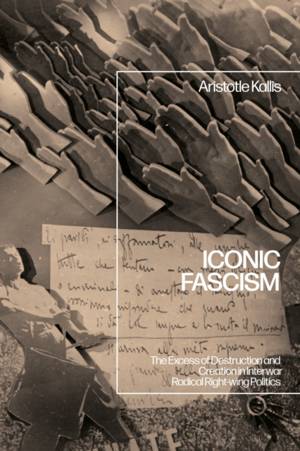
- Afhalen na 1 uur in een winkel met voorraad
- Gratis thuislevering in België vanaf € 30
- Ruim aanbod met 7 miljoen producten
- Afhalen na 1 uur in een winkel met voorraad
- Gratis thuislevering in België vanaf € 30
- Ruim aanbod met 7 miljoen producten
Zoeken
Iconic Fascism
The Excess of Destruction and Creation in Interwar Radical Right-Wing Politics
Aristotle Kallis
Hardcover | Engels
€ 129,95
+ 259 punten
Omschrijving
Aristotle Kallis uses comparative analysis in Fascism and Iconoclasm to demonstrate that fascists were supreme icon-lovers even as they were consummate icon-breakers. Kallis shows that Iconoclasm - the wilful destruction of icons - was a core feature of fascist violence, from its early movement days through to the consolidation of political power and until the very end of the fascist epoch. The book looks at how fascist iconoclasm changed significantly over this period and differed in its targets and rituals from case to case, whilst remaining central to the fascist dynamics of rupture and rebirth. It examines several case studies, with a focus on Mussolini's Italy and Nazi Germany, and underlines how much fascists appreciated and instrumentalized icons and symbols in the pursuit of their revolutionary political project in the process.
Specificaties
Betrokkenen
- Auteur(s):
- Uitgeverij:
Inhoud
- Aantal bladzijden:
- 272
- Taal:
- Engels
Eigenschappen
- Productcode (EAN):
- 9781350169074
- Verschijningsdatum:
- 19/02/2026
- Uitvoering:
- Hardcover
- Formaat:
- Genaaid
- Afmetingen:
- 156 mm x 234 mm
- Gewicht:
- 453 g

Alleen bij Standaard Boekhandel
+ 259 punten op je klantenkaart van Standaard Boekhandel
Beoordelingen
We publiceren alleen reviews die voldoen aan de voorwaarden voor reviews. Bekijk onze voorwaarden voor reviews.








